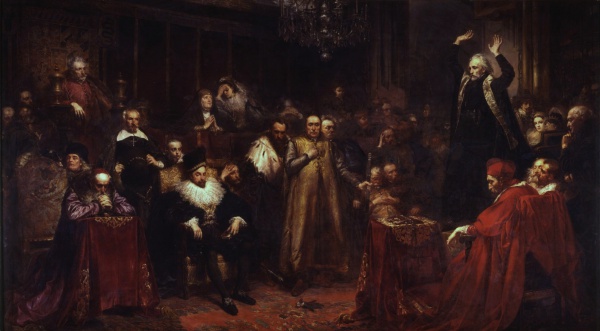Facts About Sermon of Piotr Skarga
"The Sermon of Piotr Skarga" commonly known as "Skarga's Sermon" is an extraordinary oil painting by Jan Matejko, completed in 1864. This masterpiece is on display at the National Museum in Warsaw, Poland. The painting vividly captures a moment where the Jesuit priest Piotr Skarga, a pivotal figure in Poland's Counter-Reformation, admonishes the Polish elite for neglecting the nation’s welfare.
What sets this painting apart is its historical depth and the recognizable portraits of significant figures from that era, including Matejko himself, who incorporated his own likeness as Skarga. The artwork is imposing, spanning over 8 square meters, and it marked a significant milestone in Matejko's career, drawing immense attention when first exhibited in Kraków. Eventually, Count Maurycy Potocki acquired it for a substantial sum.
Set in the early 17th century, the painting portrays a Poland rife with political turmoil, ensnared between powerful magnates and elected kings, teetering on the brink of anarchy. Through this work, Matejko immortalizes Skarga's impassioned sermon, emphasizing its enduring impact on Polish history. While the painting does not adhere strictly to historical facts, its purpose is to convey a powerful message rather than precise details, showcasing Skarga's fierce critique of the Polish government.
Matejko's painting features various historical figures, each reacting to Skarga's sermon in ways that reflect their historical roles. The composition includes notable personalities like King Sigismund III Vasa and other pivotal figures of the time. This portrayal of political tension and impending civil conflict adds a rich layer to the narrative.
The success of "Skarga's Sermon" brought Matejko widespread acclaim, both in Poland and internationally. It earned him membership in the Kraków Scientific Society and a gold medal at the Paris Salon in 1865. Critics praised the painting for its composition and its relevance to the Counter-Reformation era, comparing Matejko's work to that of esteemed artists like Paul Delaroche and Louis Gallait.

 Belarus
Belarus